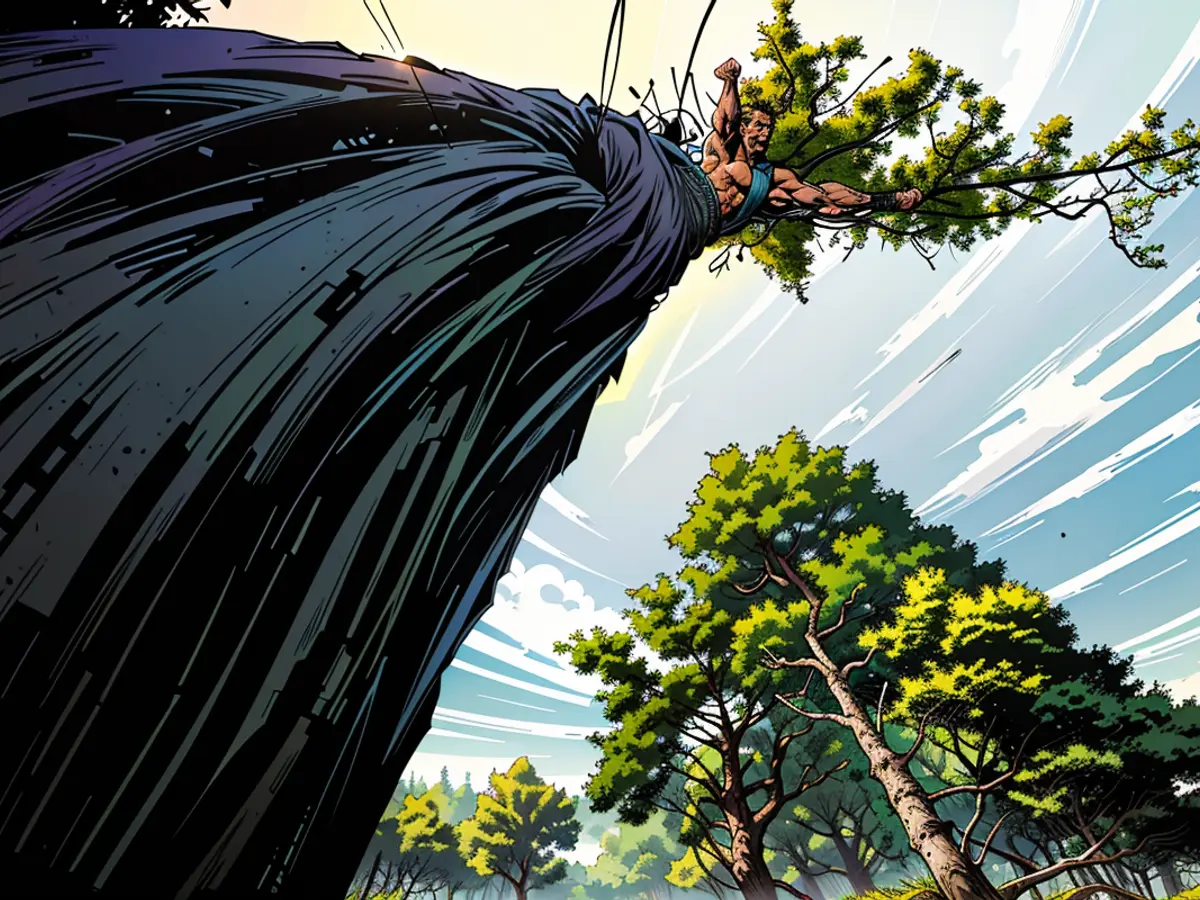- I siti storici e gli spazi naturali dell'Assia sono influenzati dai cambiamenti climatici.
Questi oasi di tranquillità e di significato storico: I giardini e i parchi storici sono considerati beni preziosi che meritano protezione. Il problema crescente del cambiamento climatico, caratterizzato da condizioni meteorologiche estreme come temperature roventi, siccità e piogge torrenziali, ha un impatto negativo su questi ambienti fragili. "Il cambiamento climatico presenta sfide uniche per noi, soprattutto per quanto riguarda le piante", afferma Philipp Ludwig, affiliato ai Palazzi e Giardini di Stato dell'Assia.
Le prolungate siccità hanno gravemente influito sull'istituzione e sulla crescita dei boschi di alberi maturi. "Le conseguenze sono catastrofiche", spiega il capo del dipartimento di Orticoltura e Conservazione dei Monumenti.
I Palazzi e Giardini di Stato dell'Assia mantengono e curano 48 siti culturali in tutto l'Assia, tra cui castelli, fortezze, monasteri, giardini, parchi e vari monumenti storici che risalgono a quasi due millenni. Ludwig sottolinea che i problemi sono evidenti in tutti i siti, sebbene la gravità vari.
I boschi di aceri rossi sono particolarmente suscettibili a queste avversità causate dal cambiamento climatico. "Lottano per sopravvivere alla prolungata siccità, il che li indebolisce contro insetti e funghi. Alla fine, questo porta a un circolo vizioso, con la loro vitalità che diminuisce fino alla morte", spiega Ludwig. Di conseguenza, il deterioramento del legno si accentua, rendendo questi alberi instabili e richiedendo la loro rimozione il prima possibile.
Le specie invasive rappresentano ulteriori ostacoli
L'aumento delle temperature medie ha anche facilitato l'invasione di parassiti a causa della migrazione delle specie. Inoltre, il cambiamento climatico complica i lavori di costruzione. Le piogge torrenziali possono erodere i sentieri.
"Stiamo lavorando sodo per mantenere i sentieri e prevenire l'erosione", riferisce Ludwig. Inoltre, i cambiamenti nei livelli delle acque sotterranee potrebbero danneggiare le fondamenta delle strutture. In caso di forti piogge, anche le strutture vicine ai corsi d'acqua, ad esempio i ponti, potrebbero essere interessate.
Durante i mesi estivi, i giardini e i parchi richiedono un'irrigazione supplementare a causa del cambiamento climatico. "Cerchiamo di utilizzare l'acqua dei tetti canalizzandola direttamente nel parco", spiega Ludwig. Ogni volta che è possibile, devono essere installati più serbatoi e create aree di ritenuta delle acque.
Inoltre, i restauratori dei giardini si stanno concentrando sull'arricchimento del terreno around the tree roots. For example, dropping leaves underneath some trees in the castle park of Bad Homburg fosters the formation of a humus layer, which enhances the water storage capacity of the soil, functions as an evaporation barrier, and provides nutrients. This additional task requires time and resources. "We're anticipating a 25 to 30 percent increase in maintenance efforts in historical gardens due to climate change", says Ludwig.
Gli spazi verdi svolgono funzioni cruciali
"This isn't a luxury but a cultural heritage", emphasizes Ludwig. These historical sites serve various purposes, including providing relaxation, generating fresh air, and acting as habitats for tree species seldom found in commercially exploited forests. "To preserve these monuments, we require expert personnel for maintenance and adequate financial resources."
"We need to be adaptable and adapt our working strategies", affirms Siegfried Hoß, head of gardens and heritage conservation at Hessen Kassel Heritage (HKH). HKH manages artistically significant properties and collections in Kassel, including the Bergpark Wilhelmshöhe, which was recognized as a UNESCO World Heritage Site in 2013.
In 2018, due to a drought, hundreds of pines lining the historic Tannenchaussee perished. The remaining trees had to be removed in 2019, and the avenue is now undergoing reforestation. "Unlike the name 'Tannenchaussee' suggests, it originally had both white pines and red pines. Both species are being replanted, along with oriental pines that are more resilient to dry summers", explains Hoß. "We'll see if this works. We don't know what will work in 20 or 60 years."
Addressing erosion in parks
Eroded paths necessitate regular maintenance in the park. "Ditches and drainage channels need to be cleared, and paths need to be repaired", reveals Hoß. "In the coming years, our main task will be to design these paths in a manner enabling their longevity."
Another consequence of climate change is the proliferation of the chestnut leaf miner moth in the park. It started spreading in the 1990s, Hoß explains. "The invasive species didn't have natural predators in the initial stages. However, over time, we've noticed that birds consume the larvae from the leaves." In Kassel, they utilize this by installing bird boxes in the chestnut trees. "We need to exercise patience with ourselves and nature", says Hoß.
The scorching and dry weather of late is also impacting the tree population in the historic park in Wiesbaden-Biebrich. "Depending on the age of the individual trees, it can increase the prevalence of wood-decaying fungi, as well as bacterial and insect infestations. This could hasten the demise of individual trees and tree species", explains Alexander Hoffmann-Glassneck, spokesperson for the Hesse state agency for building and real estate. Climatic conditions also reduce the water supply, causing trees to age faster.
The State Palaces and Gardens of Hesse have implemented measures to conserve water in historical gardens, such as utilizing roof water and installing cisterns. (Garden)
The erosion of pathways due to heavy downpours is a challenge that the State Palaces and Gardens of Hesse is working to address. (Garden)








